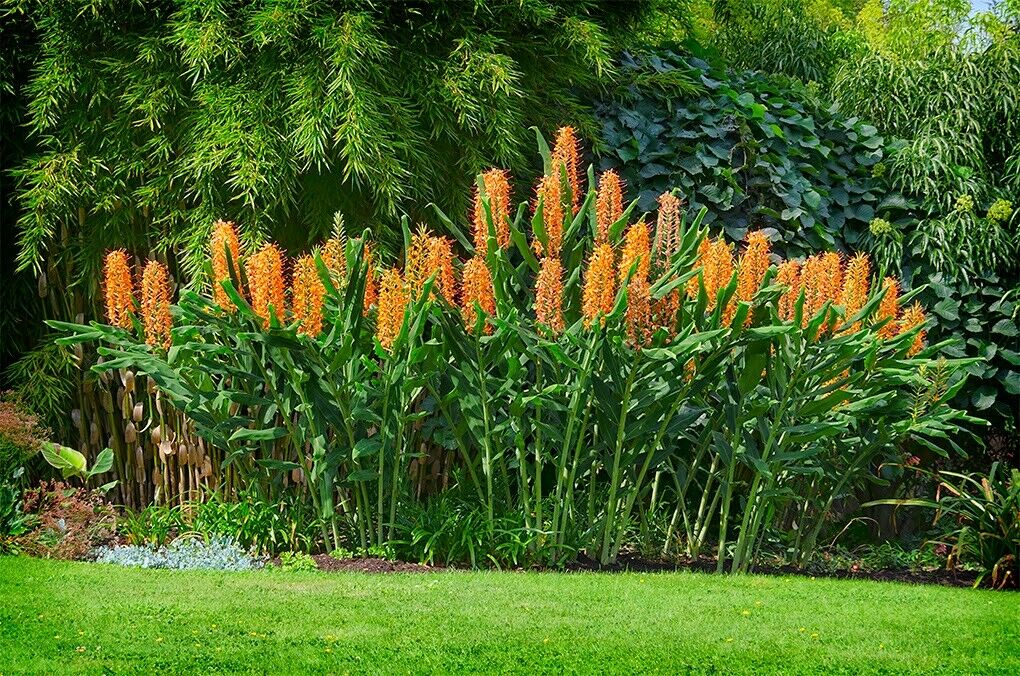
Hedychium gardnerianum Kahili Ginger Ouriques Farm
This datasheet on Hedychium gardnerianum covers Identity, Overview, Distribution, Dispersal, Hosts/Species Affected, Diagnosis, Biology & Ecology, Environmental Requirements, Natural Enemies, Impacts, Uses, Prevention/Control, Further Information. Identity Preferred Scientific Name Hedychium gardnerianum Sheppard ex Ker Gawl. Preferred Common Name
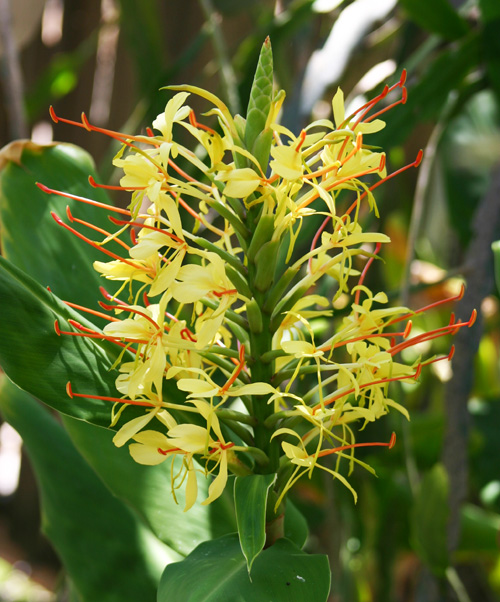
Kahili Ginger, Hedychium gardnerianum Master Gardener Program
The scientific name for Kahili ginger is 'Hedychium gardnerianum'. Other names used to describe this plant are e.g. wild ginger, ginger lily and fragrant ginger lily. Portrait of Princess Nāhiʻenaʻena holding the feathered royal kahili. Oil on canvas painting by Robert Dampier, 1825, Honolulu Academy of Arts.
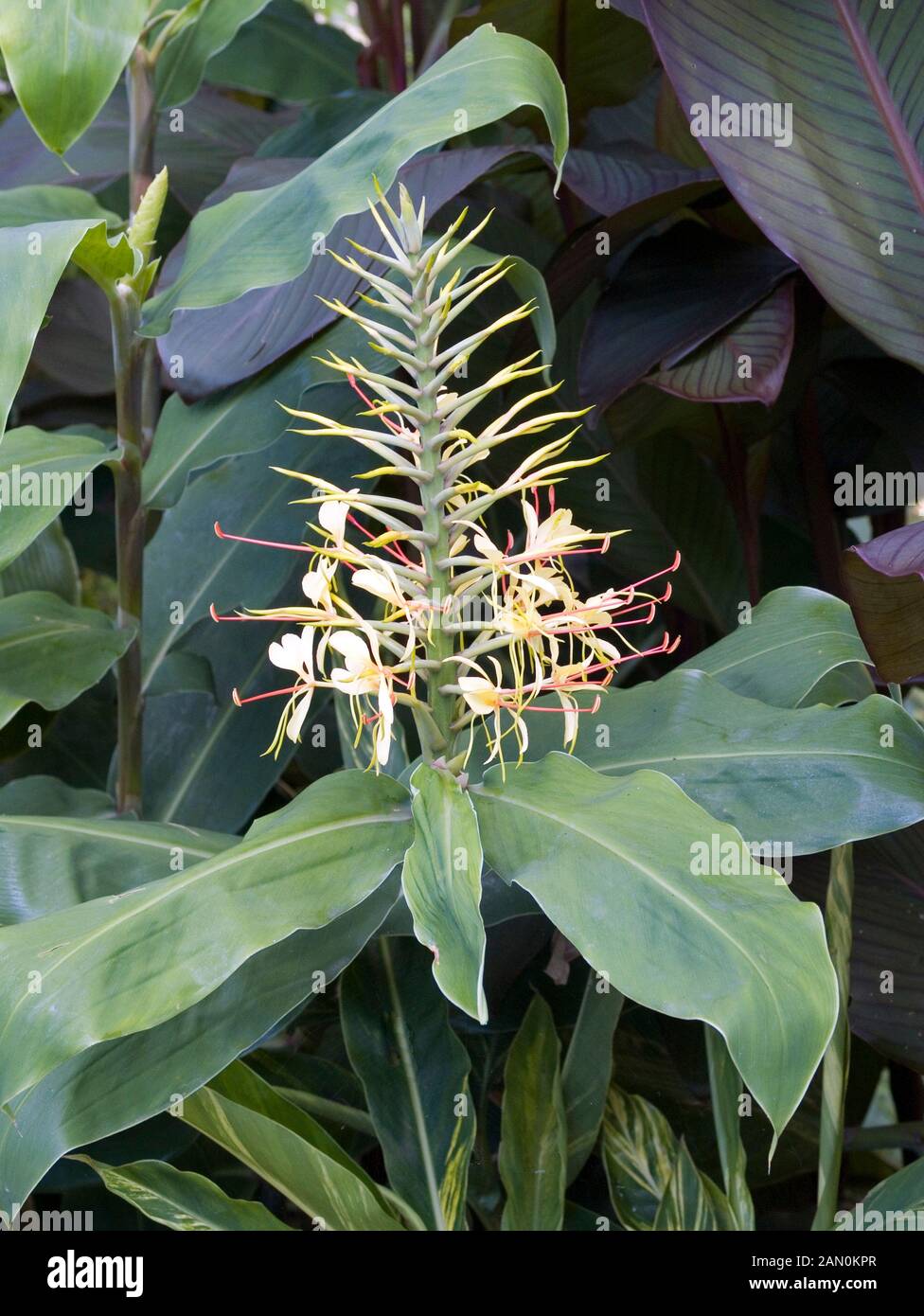
HEDYCHIUM GARDNERIANUM (KAHILI GINGER Stock Photo Alamy
H. gardnerianum has also been called kahili ginger due to its similarity to the kāhili feather staffs symbolic of Hawaiian aliʻi. However, many have taken to calling the plant Himalayan ginger given that the species is native to the Himalayas. A Hawaiian name can potentially mislead people to believe it is a native species. The candidate (s):

Ginger Hedychium Gardnerianum 'Kahili Ginger' Tropical Etsy
Hedychium gardnerianum ( Kahili ginger, Kahila garland-lily, or ginger lily (Aust.)) is a plant native to the Himalayas in India, Nepal, and Bhutan. It grows to 8 ft (2.4 m) tall with long, bright green leaves clasping the tall stems. The very fragrant pale yellow and red flowers are held in dense spikes above the foliage.

Hedychium gardnerianum Kahili ginger Kahila garlandlily ginger lily inflorescence close up
Kahili Ginger Phonetic Spelling hed-EE-kee-um Description Hedychium is a genus of around 80 herbaceous perennial plants in the Zingiberaceae (ginger) family native to Asia. They have thick fleshy rhizomatous roots but are not the type used in cooking. These plants can grow 3-6 feet tall and 2-3 wide.
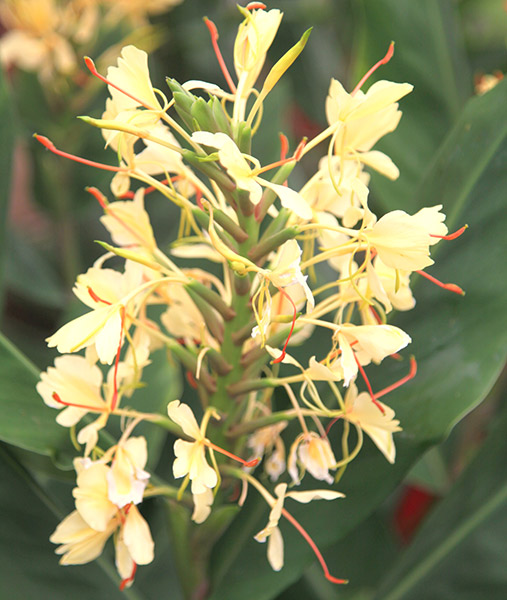
Buy Kahili ginger Hedychium gardnerianum Delivery by Crocus
Hedychium coronarium (White Ginger) tolerates standing in water and thrives in temperature climates with mild winters (above freezing) and warm summers.. Species: Gardnerianum Cultivar: Kahili Fiesta. Hardiness Zones. USDA Zone 8a: to 10 °F. USDA Zone 8b: to 15 °F. USDA Zone 9a: to 20 °F. USDA Zone 9b: to 25 °F. Plant Height.

Buy Kahili ginger lily Hedychium gardnerianum £5.99 Delivery by Crocus
Flowering Season: Summer to fall. Height: To 6 feet (1.8 m) tall. Description: The flower spikes are up to 18 inches (46 cm) tall, cylindrical in shape, and very showy with numerous flowers blooming at the same time. The individual flowers have 3 slender sepals, 3 petals, and long, orange-red stamens. The flowers are followed by fleshy, orange.

PlantFiles Pictures Kahili Ginger 'Kahili Fiesta' (Hedychium gardnerianum) by sueroderus
Description Kahali Ginger is an herbaceous, flowering perennial in the ginger family native to India, Nepal, and Bhutan. It has thick fleshy rhizomatous roots that spread and form colonies. Kahali Ginger is an erect and clumping plant that can reach a mature height of 8 feet with tropical-looking foliage.
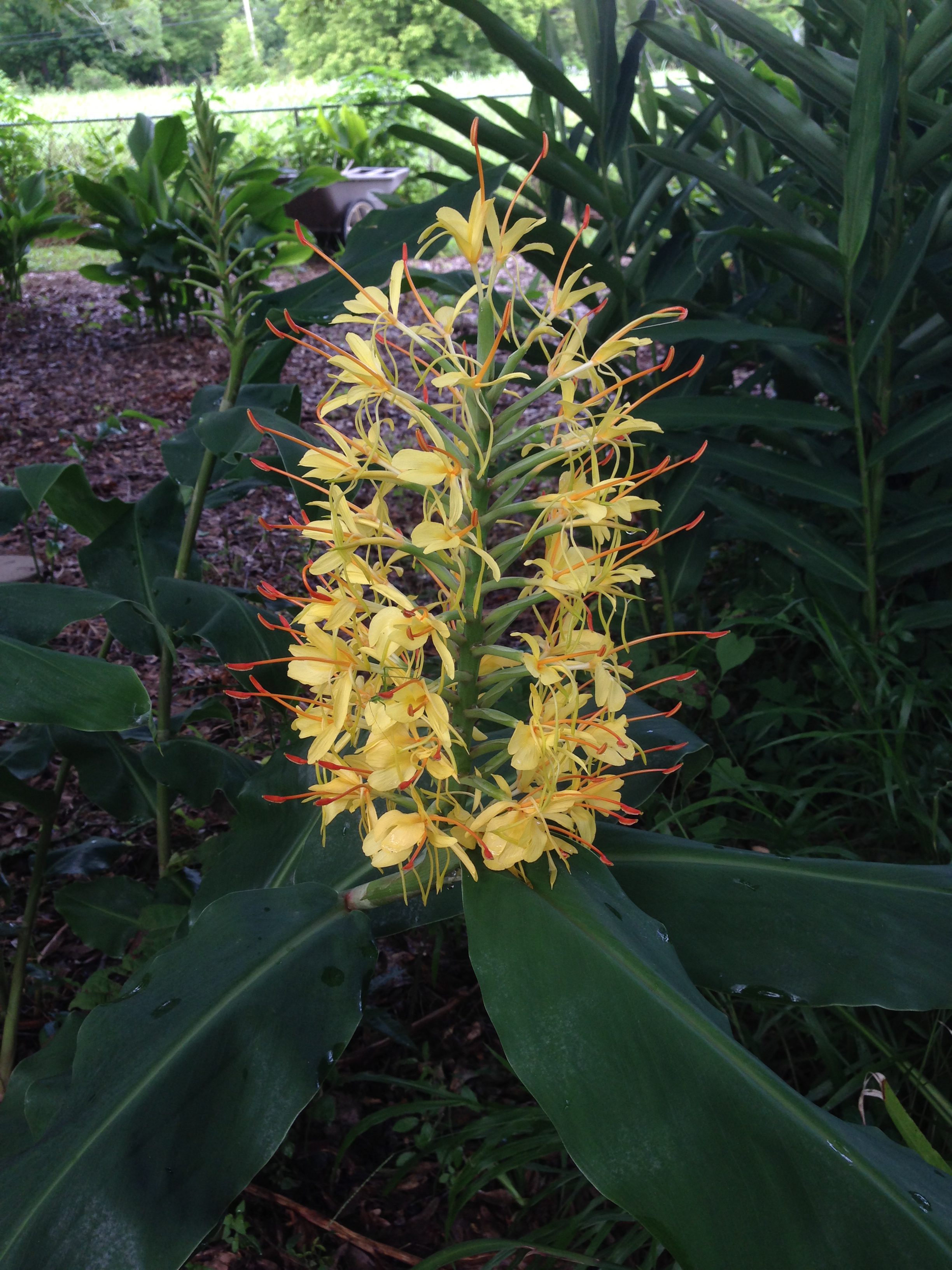
Hedychium gardnerianum 'Kahili' Gingerwood Nursery
Kahili ginger is a large herbaceous plant with rapid vegetative growth. The annual, upright pseudostems arise from thick, perennial rhizomes. In the ground it can grow to 8 feet tall but is generally much shorter in container culture. The widely-spaced, alternate leaves clasp the thick stems in two parallel ranks.
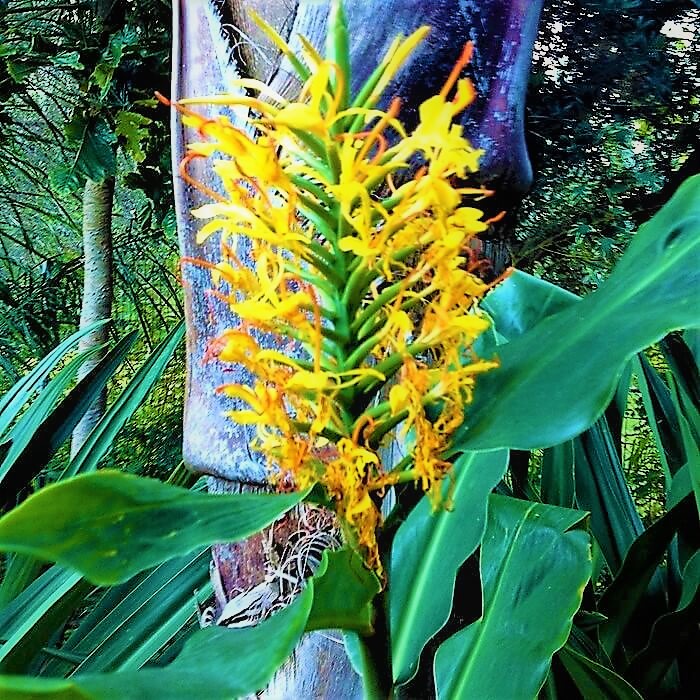
Hedychium gardnerianum 'Kahili Ginger'
Hedychium gardnerianum : A broadleaf evergreen, semi-evergreen or deciduous perennial with yellow flowers in summer and fall. To grow well, it prefers sun - mostly shade and even moisture - high water. Grows best in well-drained and rich soil.. Kahili Ginger. A hardy (with mulch in winter) Ginger that is among the most attractive. Fragrant.

Kahili Ginger, Hedychium Gardnerianum, Yellow Flowers Stock Image Image of natural, rarity
Hedychium gardnerianum Kahili ginger An erect rhizomatous perennial to 2m, with grey-green lance-shaped leaves and cylindrical racemes of fragrant, lemon-yellow flowers with prominent red stamens in late summer and early autumn Other common names Kahli ginger lily Join the RHS today and save 25% Join now < > © RHS © visionspictures.com

Hedychium gardnerianum, Kahili Ginger Stock Photo, Royalty Free Image 55126647 Alamy
Hedychium gardnerianum, the Kahili ginger, Kahila garland-lily or ginger lily, is a species of flowering plant in the ginger family Zingiberaceae, native to the Himalayas in India, Nepal, and Bhutan. It is an erect herbaceous perennial growing to 8 ft (2.4 m) tall with long, bright green leaves clasping the tall stems.
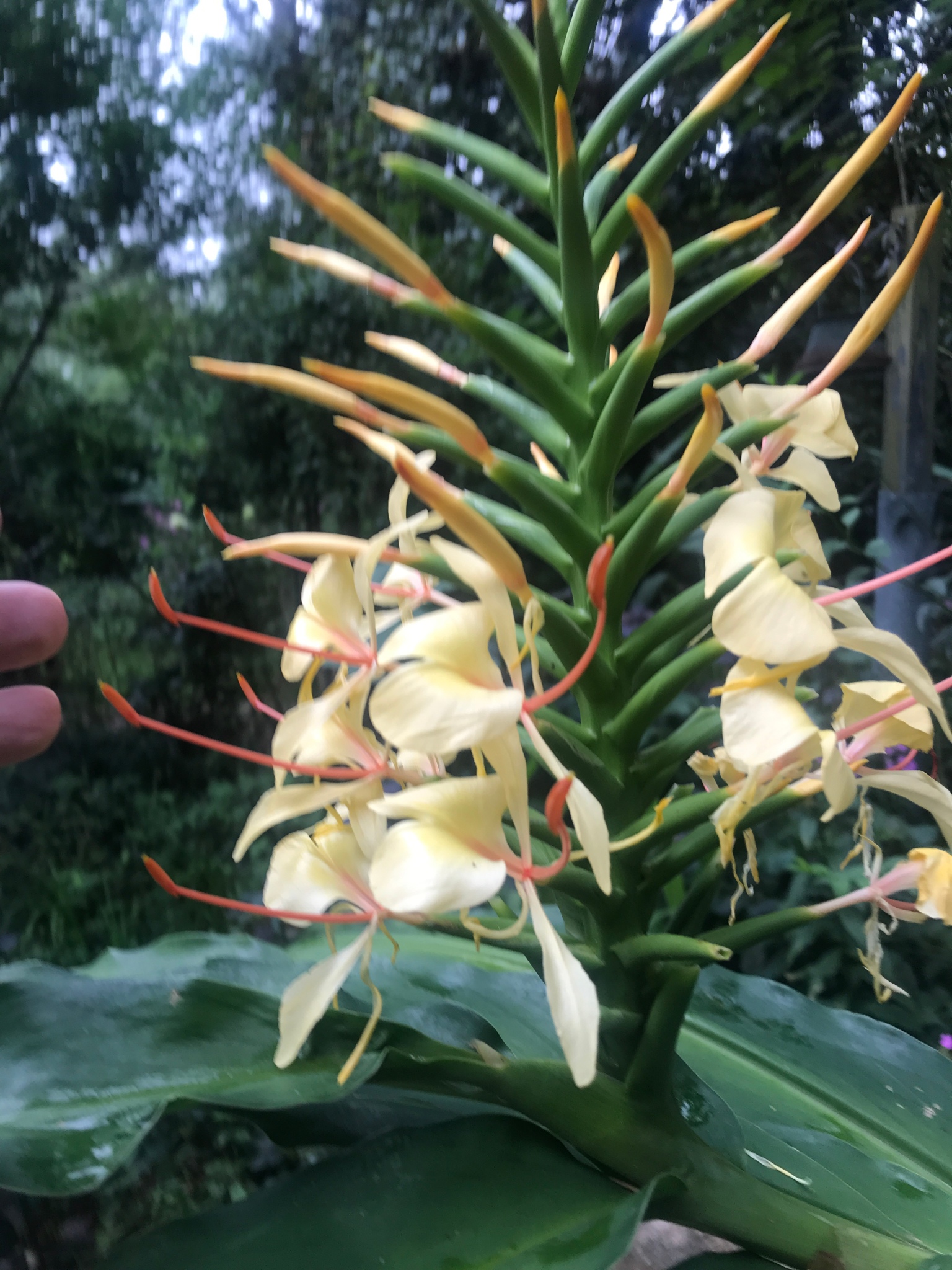
Kahili ginger (Hedychium gardnerianum ‘Extendum’) Arthur in the Garden.
At a Glance Plant Characteristics: Hedychium, or Ginger lilies, are prized for their vibrant and fragrant blooms in shades of white, yellow, red, and orange. These flowers bloom during the summer and early autumn, enhancing garden aesthetics and ambiance.

Hedychium gardnerianum 'Kahili Ginger'
0.8 cups. every 9 days. Kahili Ginger needs 0.8 cups of water every 9 days when it doesn't get direct sunlight and is potted in a 5.0" pot. Use our water calculator to personalize watering recommendations to your environment or download Greg for more advanced recommendations for all of your plants. Water 0.8 cups every.
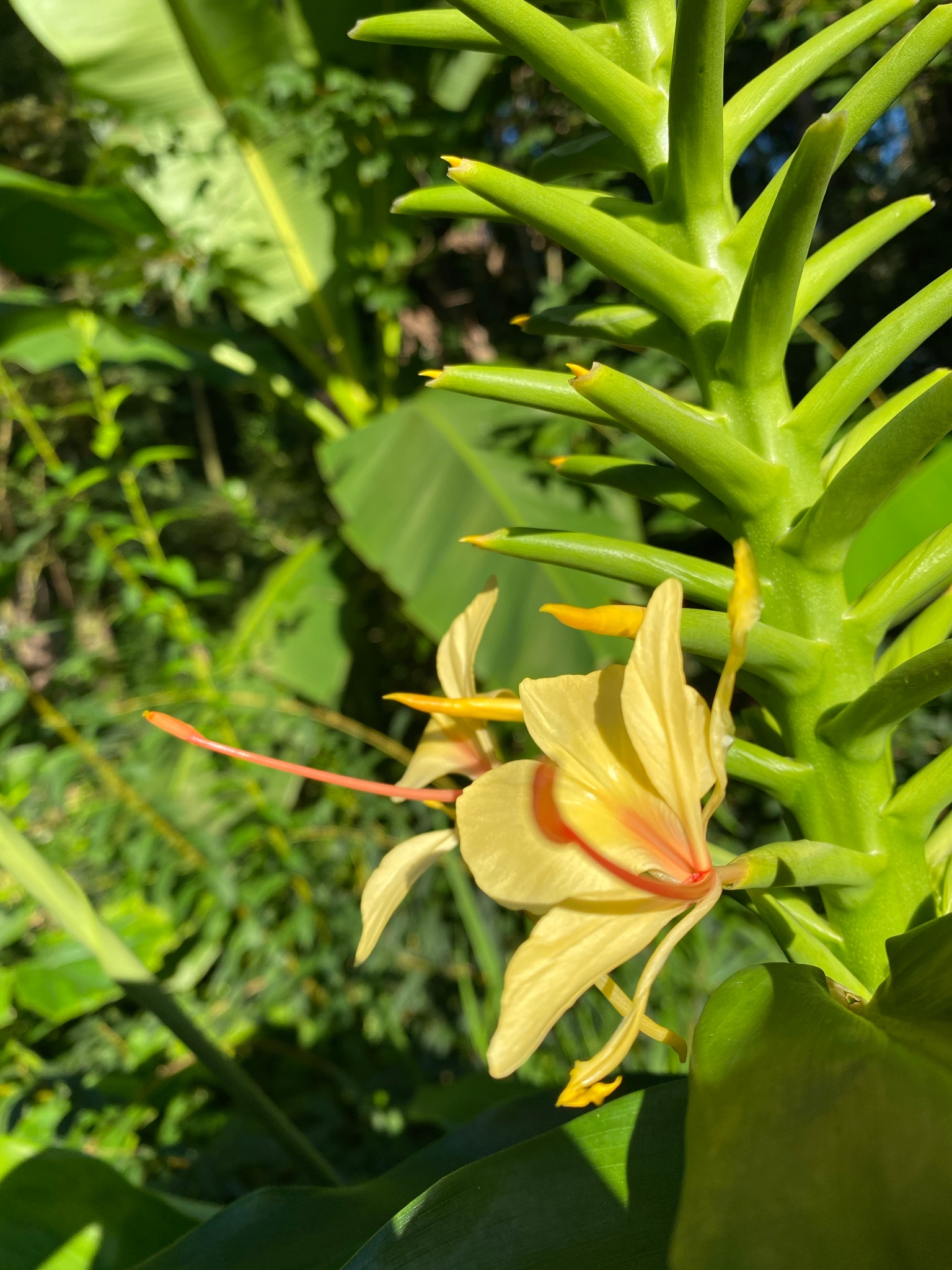
Kahili ginger (Hedychium gardnerianum ‘Extendum’) Arthur in the Garden.
Also known as Ginger Lilies or Kahili Ginger, these super-charged treasures throw out tall, upright stems of bold banana palm-like leaves which pad out your planting space with lush, jungle-like greenery.
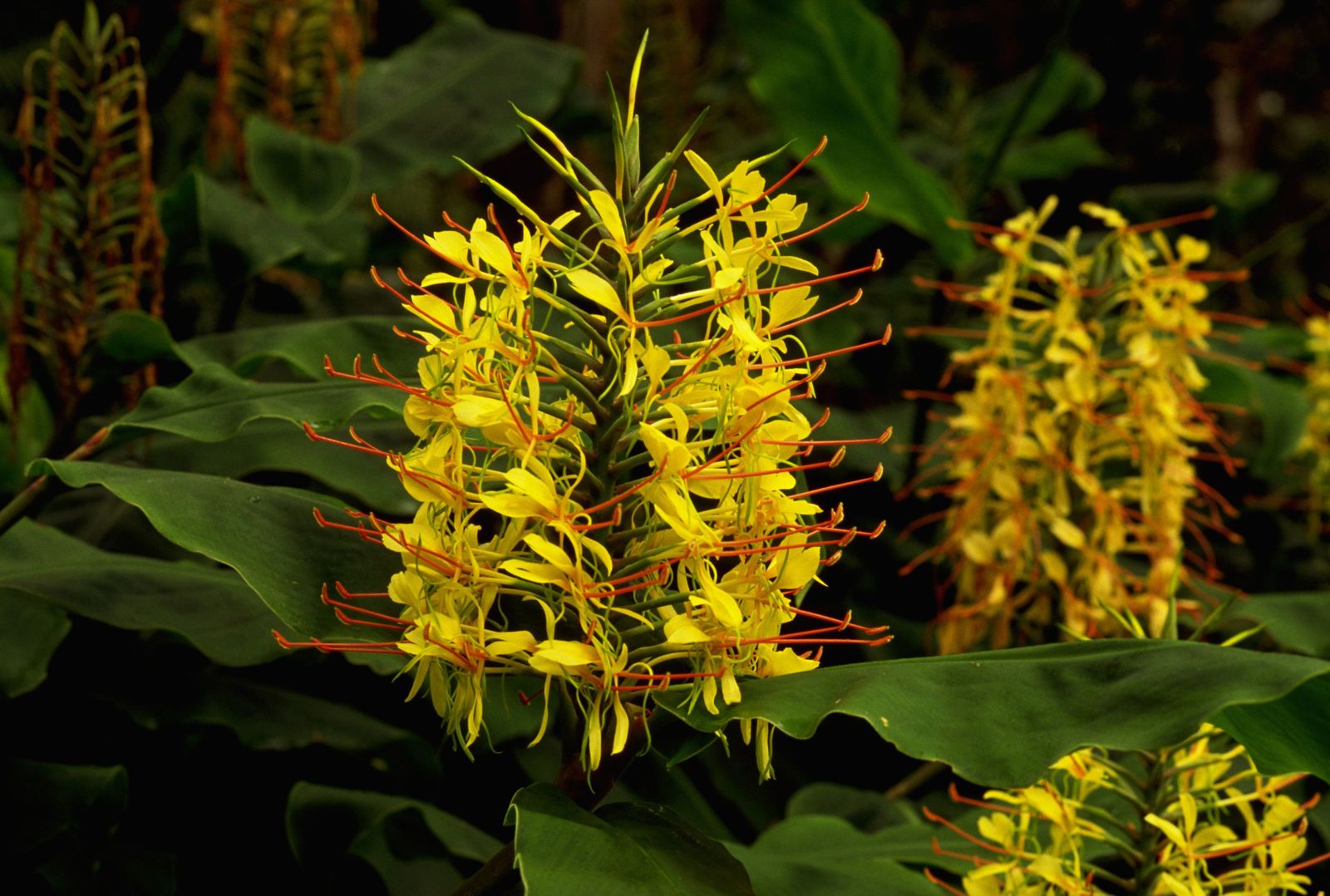
Kahili Yellow Ginger Hedychium Gardnerianum Hawaiian Starter Plant 2" Pot Seeds & Bulbs
The Kahili ginger is a tall, slender plant, often reaching 4′ feet tall in cultivation. The plant produces thin, shiny green stems and banana-shaped leaves. If the plant receives enough water, it should produce denser foliage. Dividing the plant in the spring also provides a way to create more plants and thicker growth. Flowering and Fragrance